
These black-and-white photos are taken from the new book “Armoured Warfare in the First World War 1916 – 1918” by Anthony Tucker-Jones and published by Pen & Sword Military. “Interestingly the British, French and Germans took completely different approaches with varying results”. The British military produced “Little Willie” in Autumn 1915 weighing 18 tonnes, which had a crew of two plus four gunners. “Inspired by a tracked artillery tractor “Little Willie” was referred to as a water tank – hence the name tank – to ensure secrecy”, said Anthony. “This led to the strange looking Mark I with its peculiar rhomboid shape, designed to cross trenches with guns in sponsons on either side. The Germans saw the tank as unchivalrous and were slow to grasp its utility. They favoured the Stormtrooper (specialist soldiers used to infiltrate enemy trenches) and artillery, not the tank”, said Anthony. “However, they didn’t hesitate to make use of captured British tanks. Although the tank helped secure victory and German soldiers dubbed it “Germany’s Downfall” the country was ultimately brought to its knees by the Allies blockade”. Here: British troops hitch a ride on a Mark IV after the massed tank fleet spearheading attack at Cambrai on November 20, 1917. (Photo by Anthony Tucker-Jones/Mediadrumworld.com)

Number 1 Lincoln Machine prototype built by William Foster & Company in September 1915. (Photo by Anthony Tucker-Jones/Mediadrumworld.com)
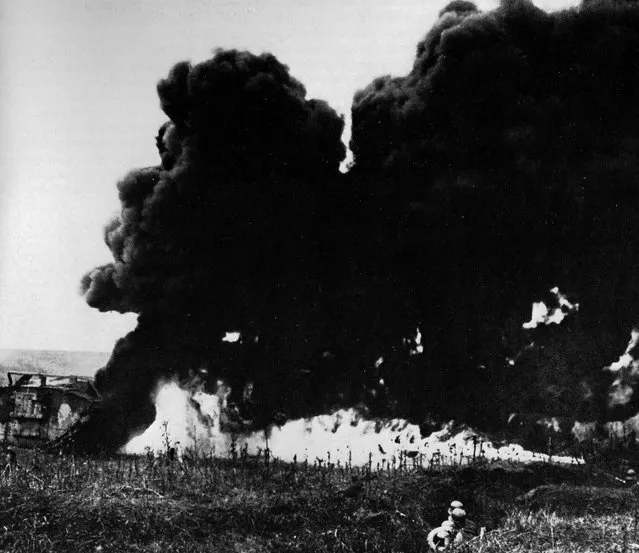
To counter British tanks, seen as unchivalrous, the Germans used flamethrowers and artillery. (Photo by Anthony Tucker-Jones/Mediadrumworld.com)
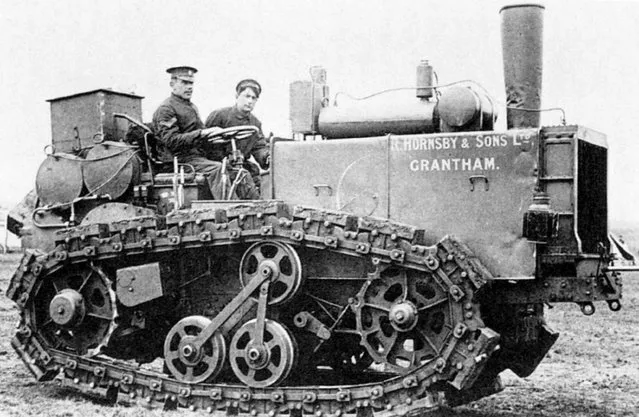
Pre-WW1 the British company Hornsby developed a caterpillar artillery tractor, which helped inspire the creation of tanks. (Photo by Anthony Tucker-Jones/Mediadrumworld.com)
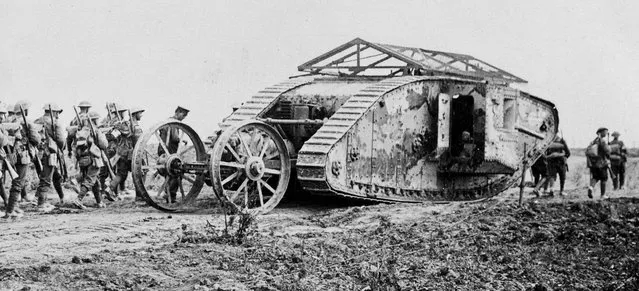
Mark I male tank with its distinctive wheeled steering tail and chicken-wire “bomb roof”. (Photo by Anthony Tucker-Jones/Mediadrumworld.com)
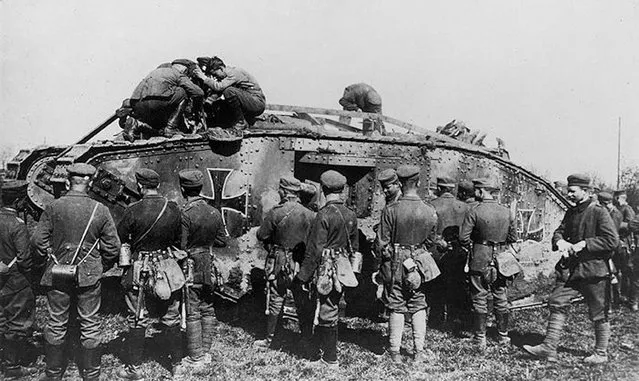
German troops familiarise themselves with an enemy tank now under new ownership. (Photo by Anthony Tucker-Jones/Mediadrumworld.com)
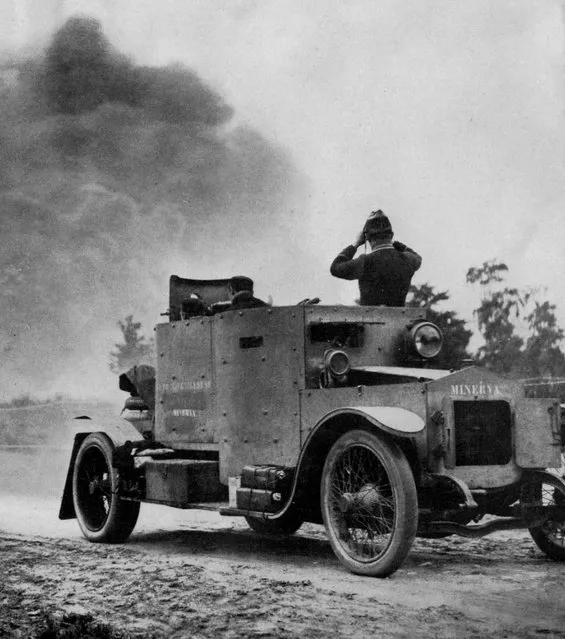
Belgium was one of the first countries to deploy the armoured car with its Minerva Model 1914, pictured. (Photo by Anthony Tucker-Jones/Mediadrumworld.com)
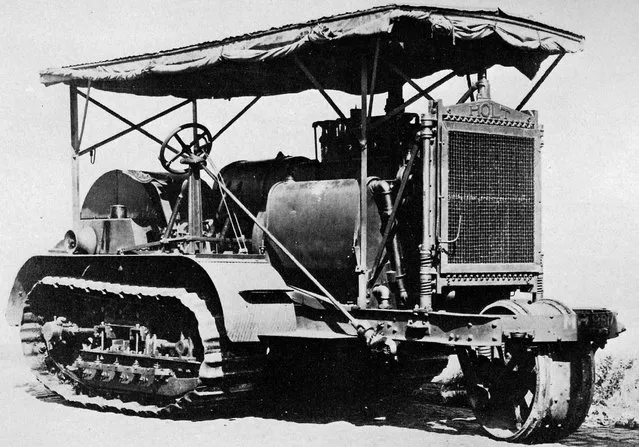
The Holt 75 model gasoline-powered caterpillar tractor provided the inspiration for the tank. (Photo by Anthony Tucker-Jones/Mediadrumworld.com)
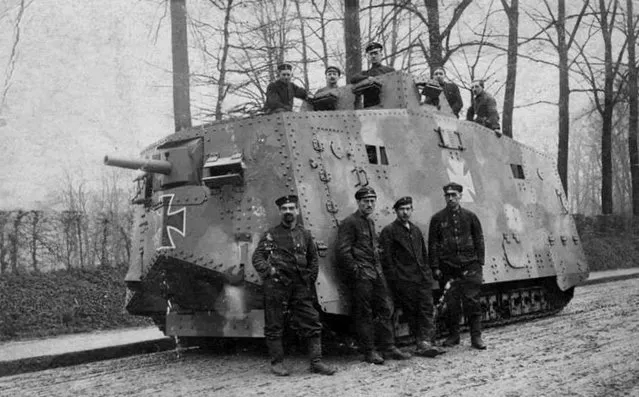
The German A7V Sturmpanzerwagen went into production in October 1917, but only twenty of these cumbersome land fortresses were built. (Photo by Anthony Tucker-Jones/Mediadrumworld.com)
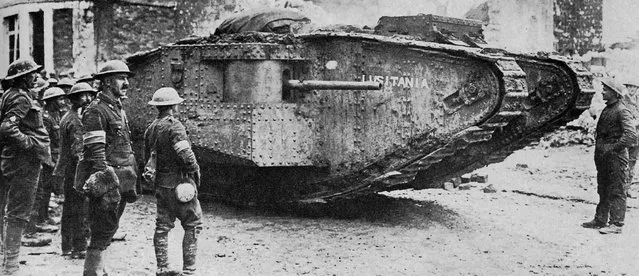
A British Mark I or II male tank, identifiable by long-barrelled naval 6-pounder gun, surrounded by Tommies. (Photo by Anthony Tucker-Jones/Mediadrumworld.com)
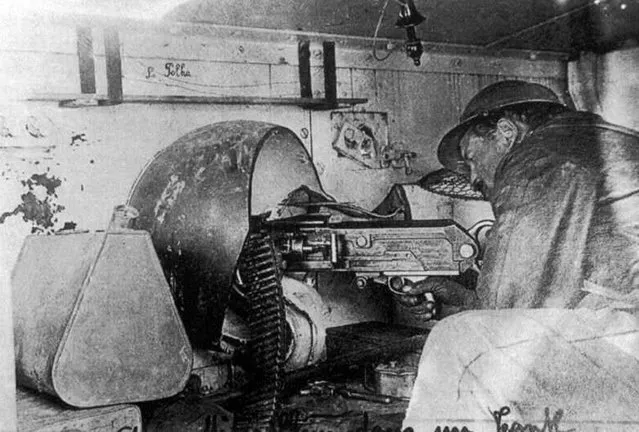
A Schneider tank gunner mans one of two Hotchkiss M1814 machine guns from inside the vehicle’s cramped hull. (Photo by Anthony Tucker-Jones/Mediadrumworld.com)
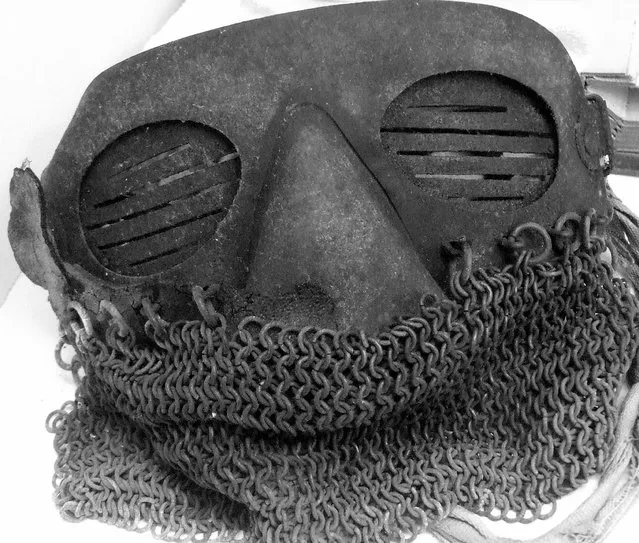
This “splatter mask” was worn by crew members to protect their faces and heads inside the tank. (Photo by Anthony Tucker-Jones/Mediadrumworld.com)
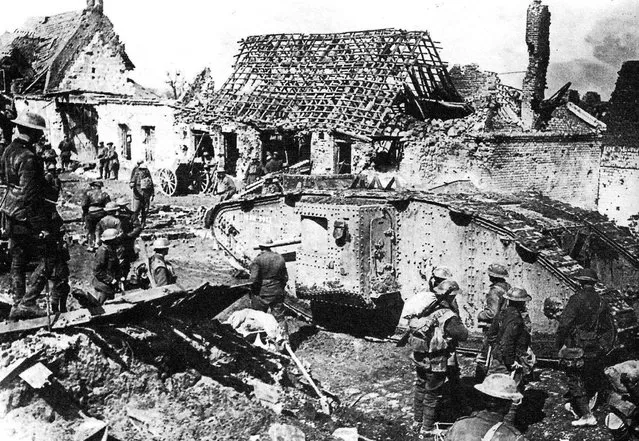
This Mark II male tank was photographed passing through the crumbling ruins of a French village in 1917. (Photo by Anthony Tucker-Jones/Mediadrumworld.com)
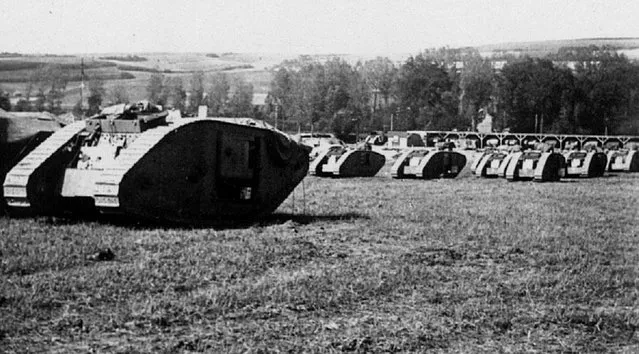
The British used some 476 tanks to smash through German lines in the 1917 Battle of Cambrai. (Photo by Anthony Tucker-Jones/Mediadrumworld.com)
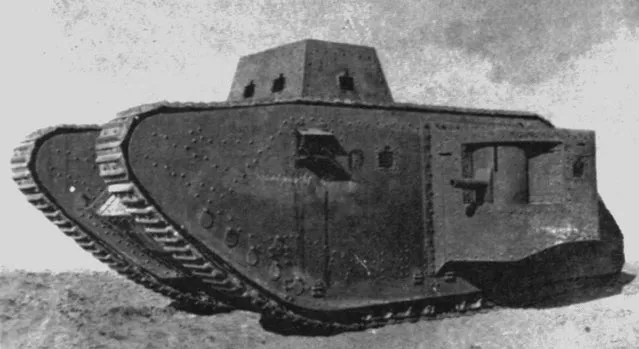
The A7VU was developed as a copy of the British rhomboid shape but did not go into production before the Armistice. (Photo by Anthony Tucker-Jones/Mediadrumworld.com)
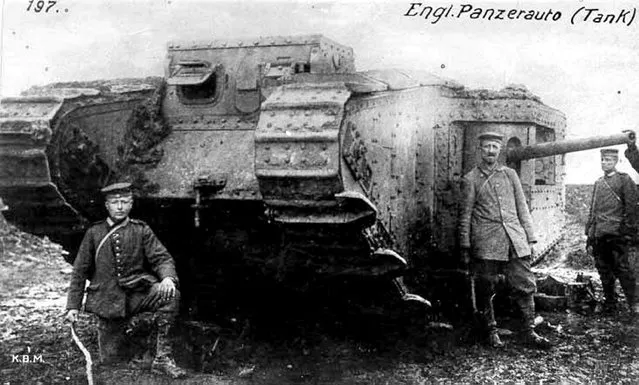
A British Mark II male tank with spudded tracks captured by Germans near Arras on April 11, 1917. (Photo by Anthony Tucker-Jones/Mediadrumworld.com)
23 Feb 2017 00:02:00,
post received
0 comments
